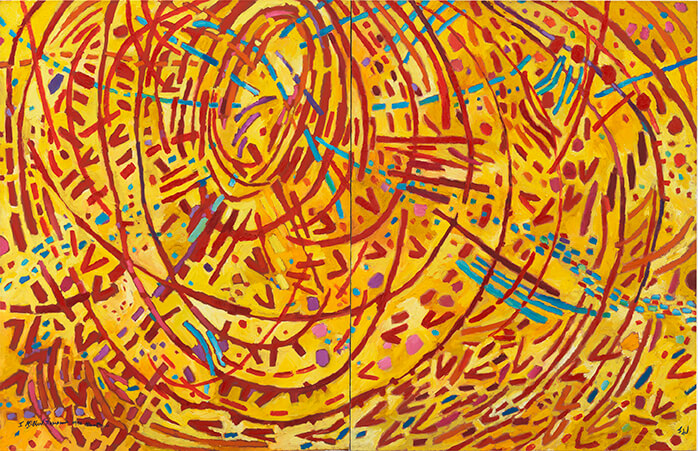Despite the fact that the center of the art world shifted from Paris to New York in the years immediately following the world wars, what emerged in the later part of the 20th century was a global exchange of ideas, with multiple centers and conversations. The artistic freedom encouraged during this period created the perfect environment for a proliferation of new ideas and styles, where both abstraction and representative work exist concurrently yet with different intonations. Canadian Rolph Scarlett pursued pure abstraction, while Mildred Thompson, a Jacksonville native, explored abstracted interpretations of unseen scientific theories. Rufino Tamayo and Oswaldo Guayasamín merged the modern aesthetic with their Latin American heritage. London-born Cecily Brown and American Bob Thompson used Old Master paintings as their inspiration but their final canvases balance on the edge of abstraction thanks to their use of color and gestural application of paint. British duo Gilbert & George and New Yorker Whitfield Lovell aim to create art that is representative and inclusive, while Damien Hirst, part of the Young British Artist movement, challenges audiences with his use of non-traditional media, like flies. With no set definition of a 20th-century aesthetic, these artists encourage viewers to reconsider our own expectations about art and its function in this global society.
Image:
Mildred Thompson (American, 1936 – 2003), Magnetic Fields, 1991, oil on canvas, 61 ¾ x 95 ½ in., Purchased with funds from the Rushton William Hays Revocable Trust and the Morton R. Hirschberg Bequest, AP.2019.1.1. Art and photo © The Mildred Thompson Estate, Atlanta, Georgia. Courtesy Galerie Lelong & Co., New York



